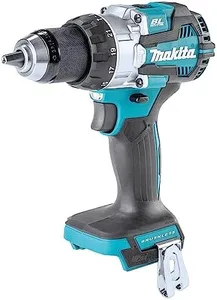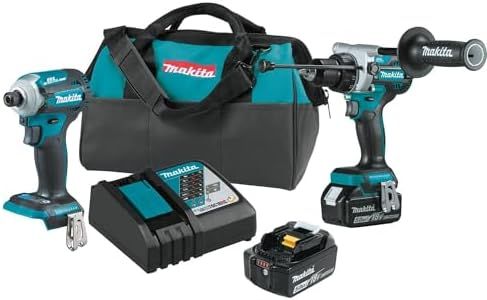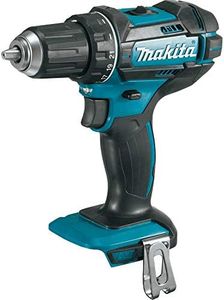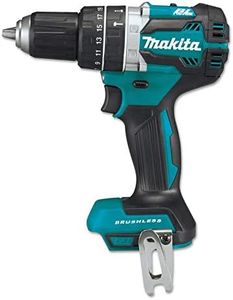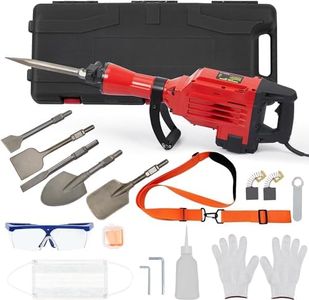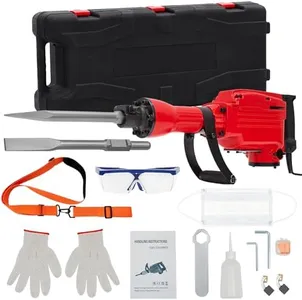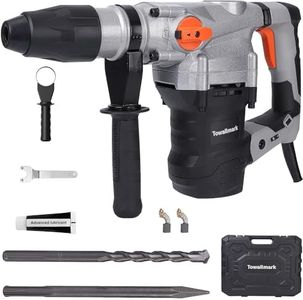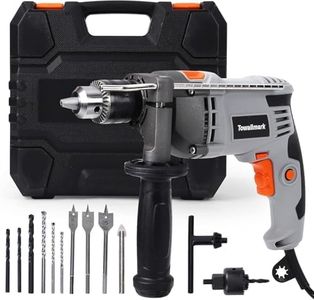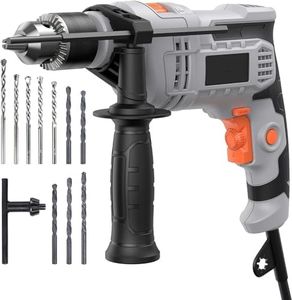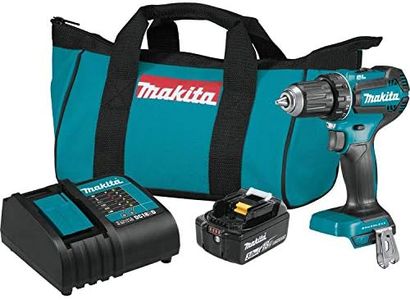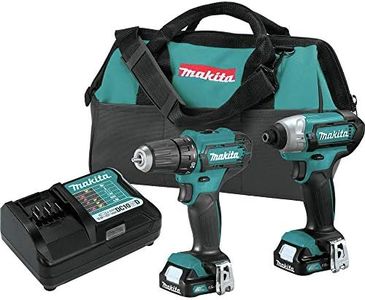8 Best Makita Drills 2025 in the United States
Our technology thoroughly searches through the online shopping world, reviewing hundreds of sites. We then process and analyze this information, updating in real-time to bring you the latest top-rated products. This way, you always get the best and most current options available.

Our Top Picks
Winner
Makita XPH16Z 18V LXT® Lithium-Ion Compact Brushless Cordless 1/2" Hammer Driver-Drill, Tool Only
Most important from
84 reviews
The Makita XPH16Z 18V LXT® Hammer Driver-Drill is a robust tool designed for a variety of drilling, driving, and hammer applications. It is powered by an 18V Lithium-Ion battery (not included), which ensures longer run times thanks to the efficient, electronically controlled brushless motor. This model delivers a substantial 970 in.lbs. of max torque, making it suitable for heavy-duty tasks.
The variable 2-speed design allows for versatility, with speeds reaching up to 1800 RPM and 27,000 BPM for different job requirements. With a weight of just 3.83 pounds, it is relatively lightweight and easy to handle, reducing user fatigue during extended use. The 1/2 inch chuck size is standard and accommodates a broad range of bits. The motor's design eliminates carbon brushes, resulting in a cooler and more efficient operation, thus extending the tool's lifespan.
However, it's worth noting that the package includes only the tool, meaning the battery and charger must be purchased separately. This might be inconvenient and increase the cost. Ideal for both professional contractors and DIY enthusiasts, the Makita XPH16Z combines power, efficiency, and versatility in a compact, user-friendly design.
Most important from
84 reviews
Makita XT288T 18V LXT® Lithium-Ion Brushless Cordless 2-Pc. Combo Kit (5.0Ah)
Most important from
659 reviews
The Makita XT288T 18V LXT Lithium-Ion Brushless Cordless 2-Pc. Combo Kit is designed for both DIY enthusiasts and professionals who require reliable and versatile drilling and driving tools. With its high-performance brushless motor, the Hammer Driver-Drill offers impressive speed settings (0-550 and 0-2,100 RPM) and a strong torque of 1,250 in.lbs., making it suitable for a variety of tasks from light to heavy-duty applications. Weighing in at just 6.0 lbs. with the battery attached, it's also lightweight enough for prolonged use without causing fatigue.
The impact driver included in the kit adds further versatility, with four-speed power settings and a maximum torque of 1,590 in.lbs. This feature allows users to adjust the tool's power to meet the needs of different tasks effectively. Both tools are equipped with Makita’s Extreme Protection Technology (XPT), providing added durability in challenging conditions by resisting dust and water.
One of the standout features is the efficient BL Brushless motor, which optimizes battery energy use, extending run time by up to 50% per charge—great for longer projects without frequent recharging. With two included 5.0Ah Lithium-Ion batteries, users can easily switch between tools without downtime. This combo kit has many strengths, but some users may find the higher torque and speed capabilities a bit overwhelming if they're looking for simpler tools for basic tasks. Additionally, while the lightweight design is generally beneficial, it might not provide the heft some users prefer for stability during use. The price point could also be a consideration for those on a tight budget, as it may be higher than basic drill options available on the market. The Makita XT288T is a powerful and reliable choice for varied applications, particularly in demanding environments.
Most important from
659 reviews
Makita XFD10Z 18V LXT Lithium-Ion Cordless Driver-Drill, Tool Only, 1/2"
Most important from
705 reviews
The Makita XFD10Z 18V LXT Lithium-Ion Cordless Driver-Drill is a solid choice for those needing a reliable and versatile tool. With an 18V power source and lithium-ion battery (though not included), it offers strong performance and longevity. The 1/2-inch chuck size makes it suitable for a variety of drilling tasks, from wood to metal. It boasts a Makita-built 4-pole motor delivering up to 480 in. lbs. of torque, which is impressive for handling tough jobs.
The mechanical 2-speed transmission provides flexibility, with speeds ranging from 0-600 RPM and 0-1,900 RPM, catering to different drilling and fastening needs. Weighing only 2.93 pounds, this drill is lightweight and designed with ergonomics in mind, featuring a rubberized soft grip for comfort during prolonged use. Additionally, the dual LED lights are a handy feature for illuminating work areas in dim conditions.
The Extreme Protection Technology (XPT) enhances its durability by increasing resistance to dust and water, making it suitable for harsh job sites. Some drawbacks include the fact that the battery and charger are sold separately, which could be an additional cost for users. Additionally, the tool-only package may not appeal to those looking for a complete set. Despite these minor inconveniences, its robust feature set makes it a reliable tool for both professionals and DIY enthusiasts.
Most important from
705 reviews
Buying Guide for the Best Makita Drills
When choosing a Makita drill, it's important to consider your specific needs and the types of projects you'll be working on. Makita offers a wide range of drills, each designed for different tasks and user requirements. By understanding the key specifications and how they relate to your needs, you can make an informed decision and select the best drill for you.FAQ
Most Popular Categories Right Now
